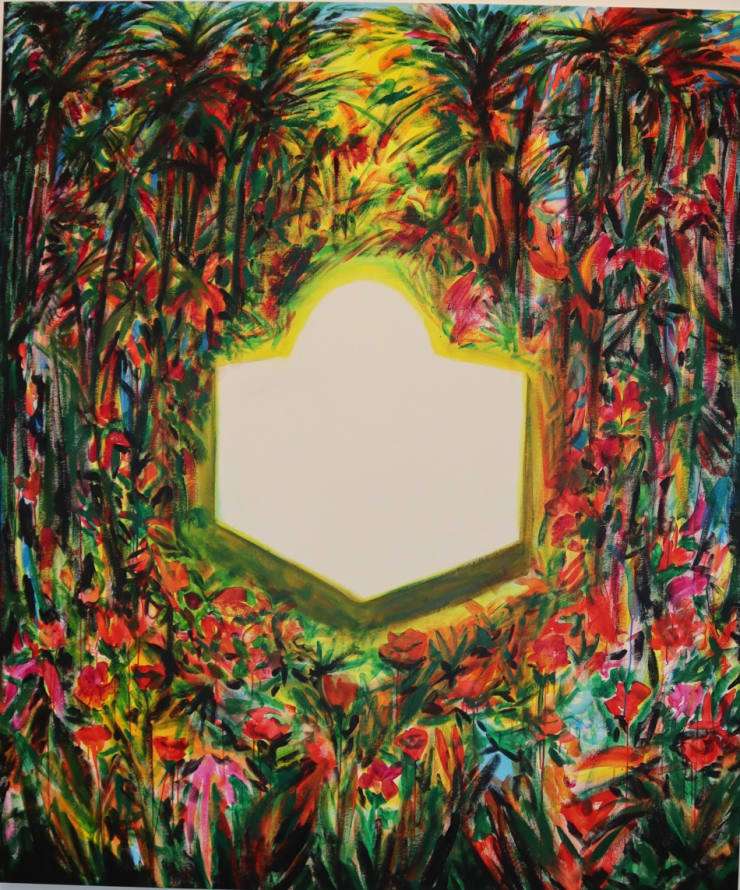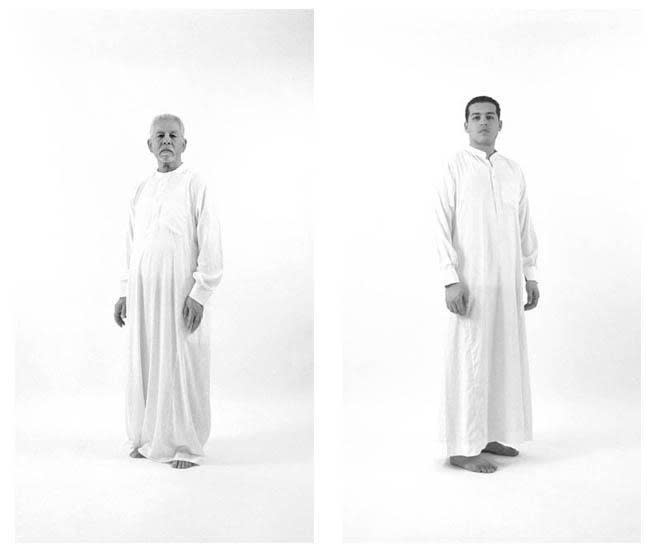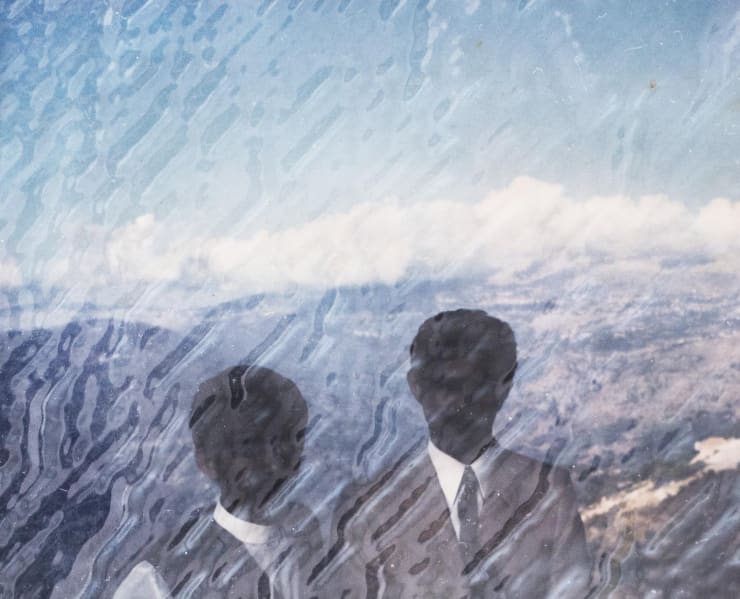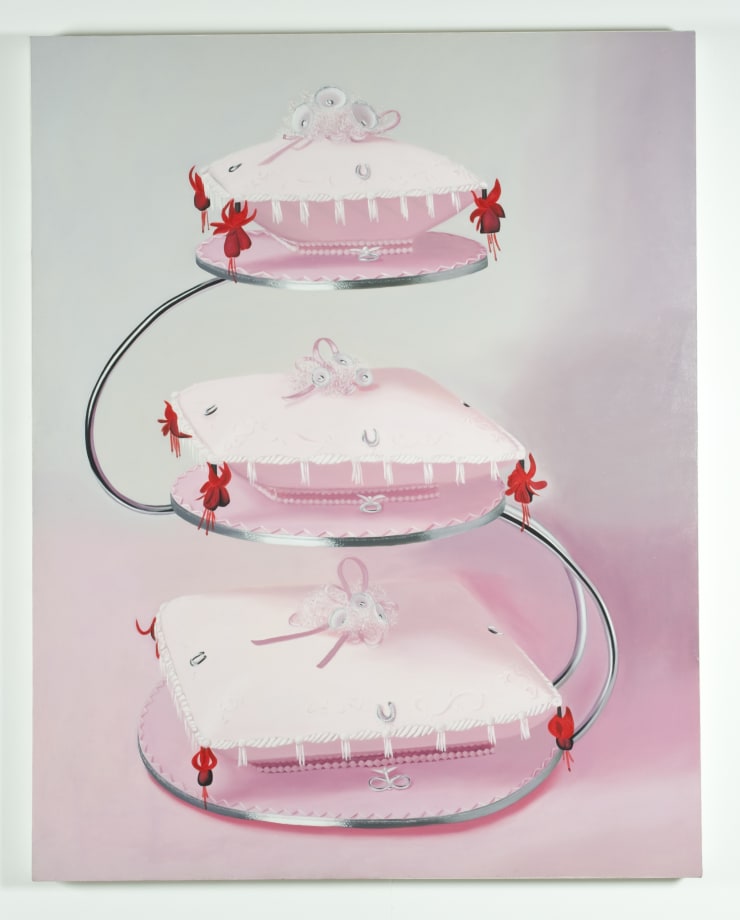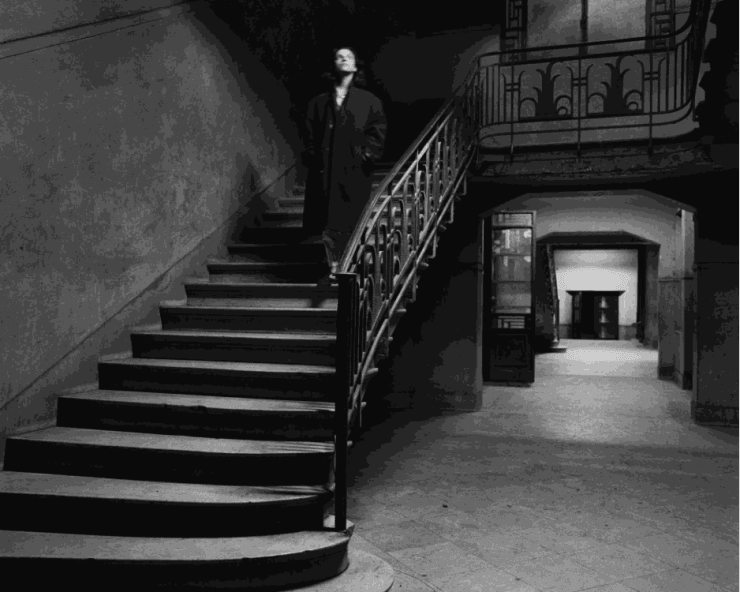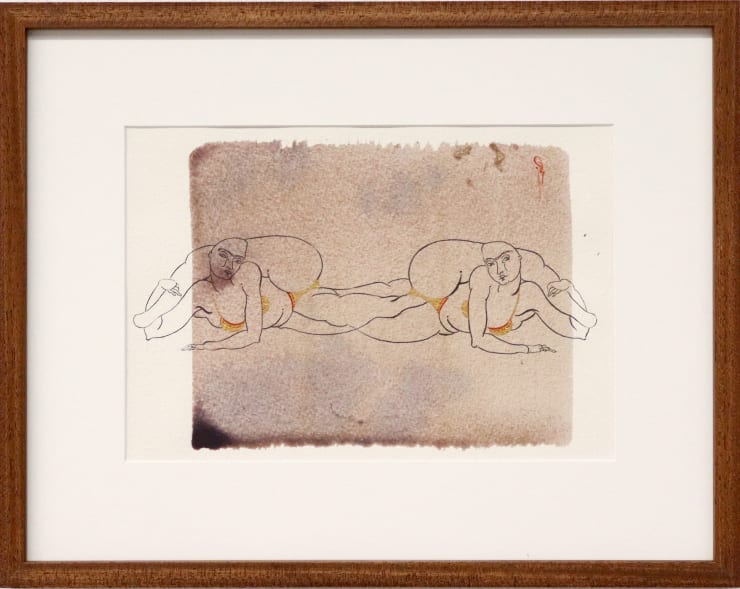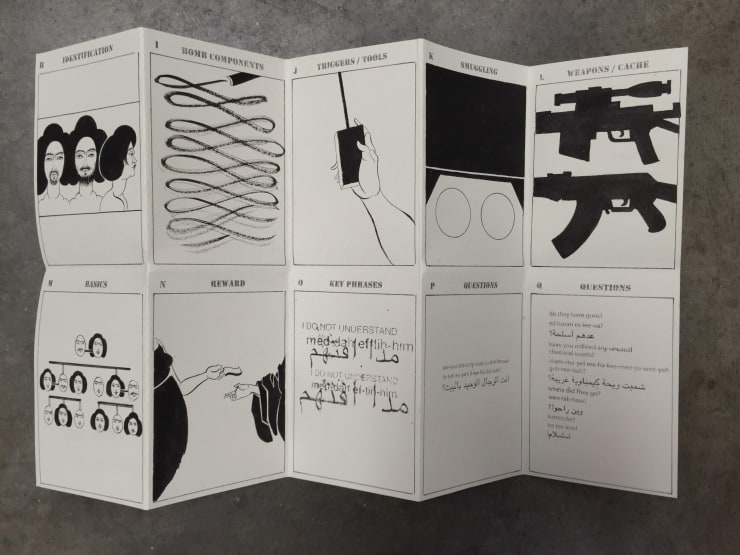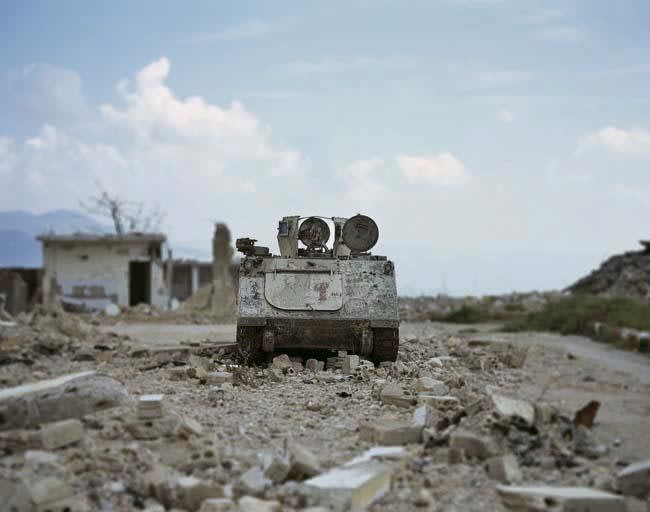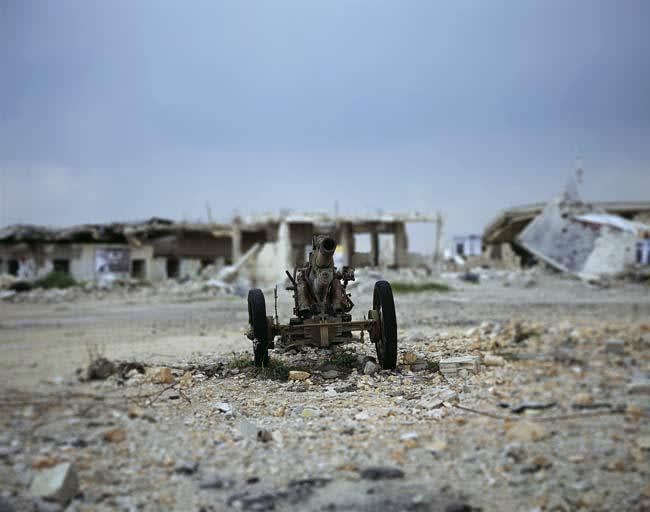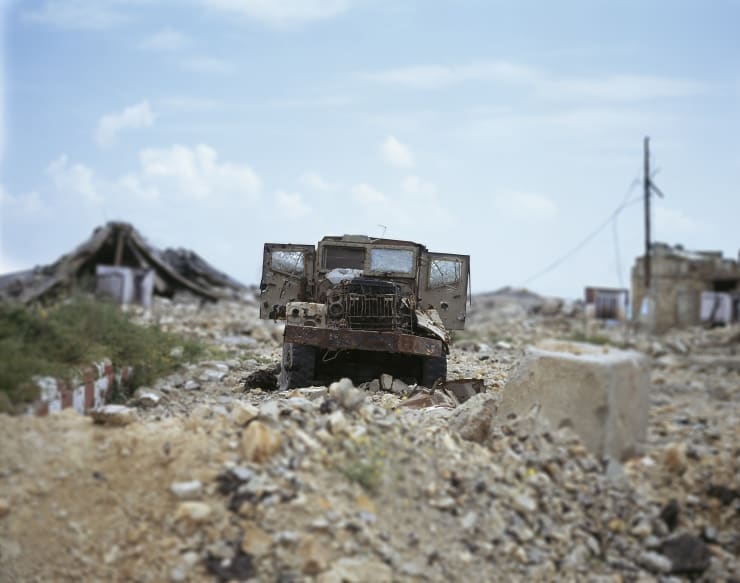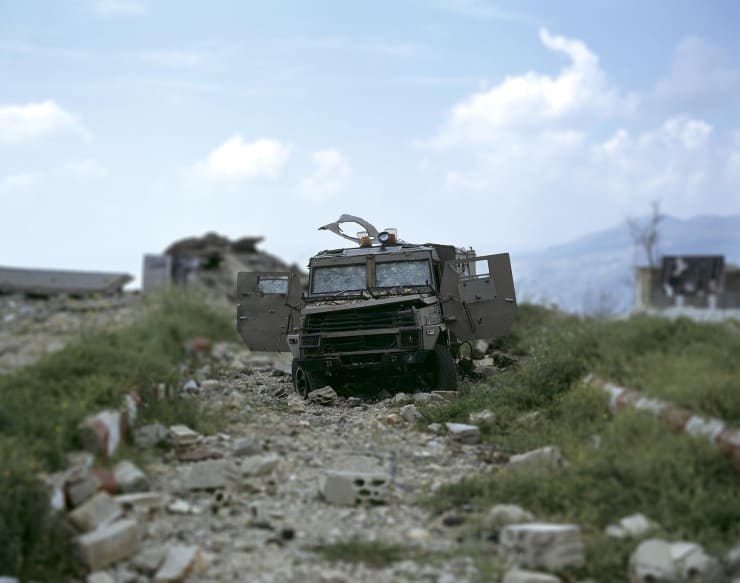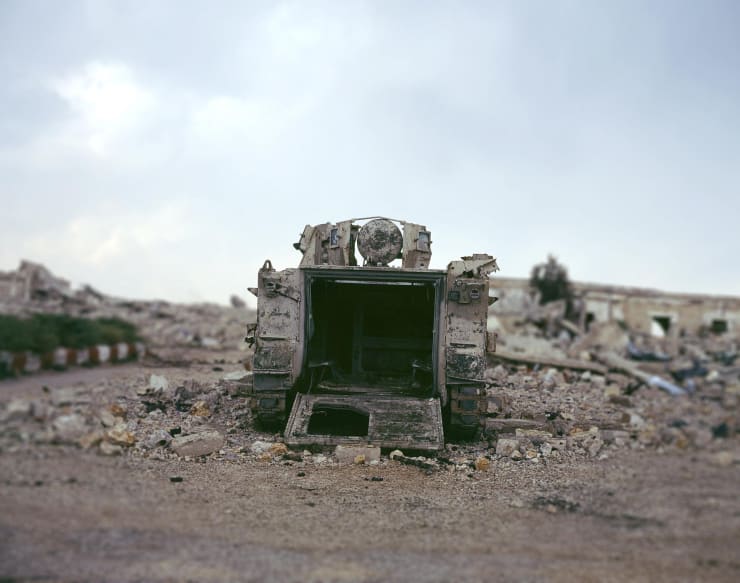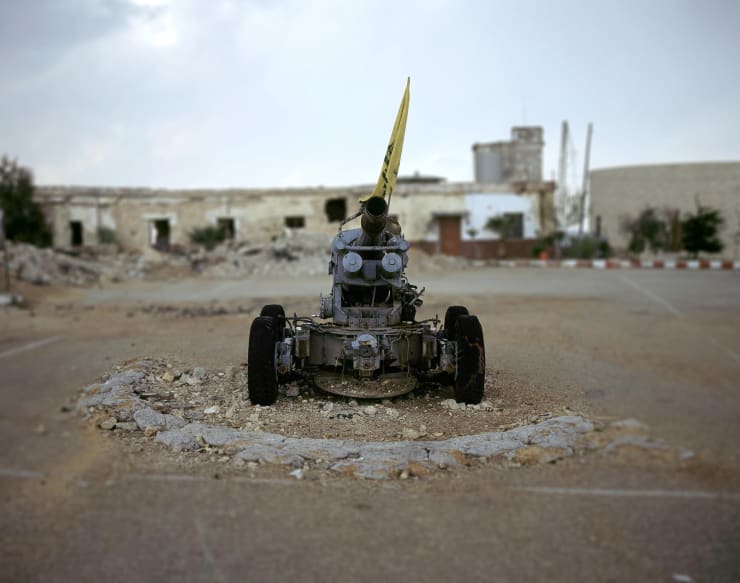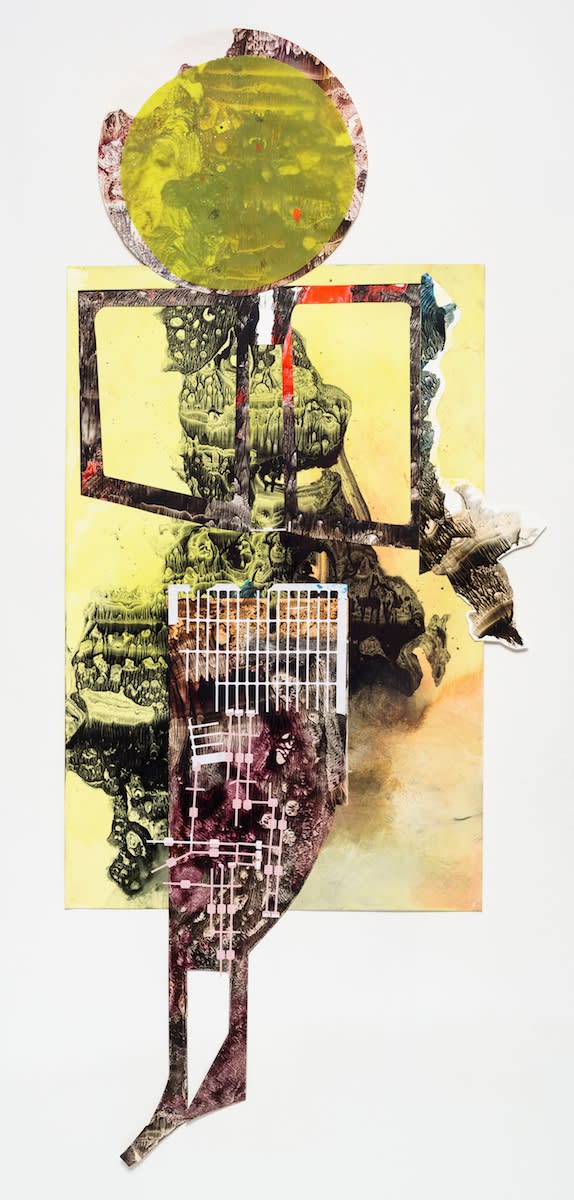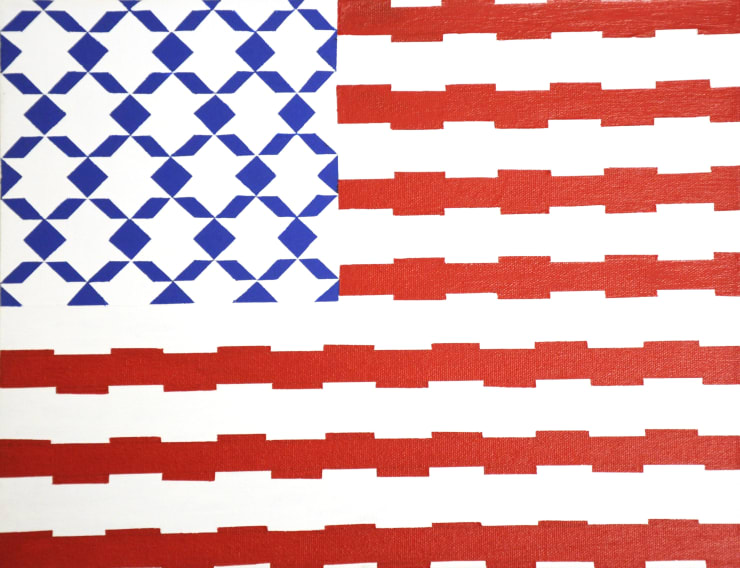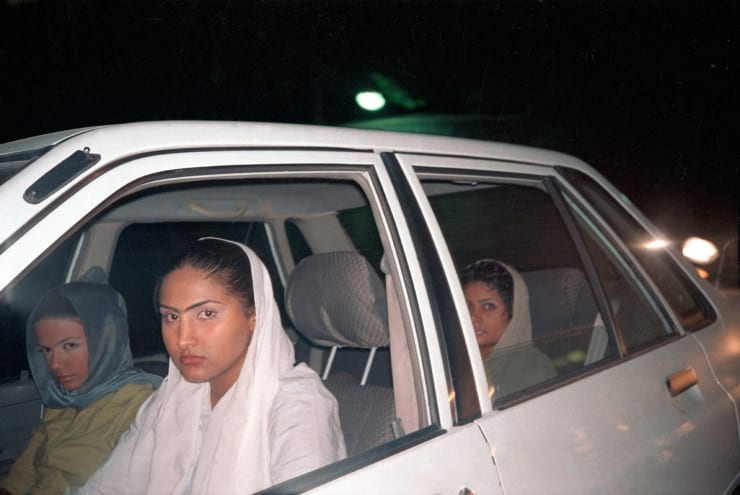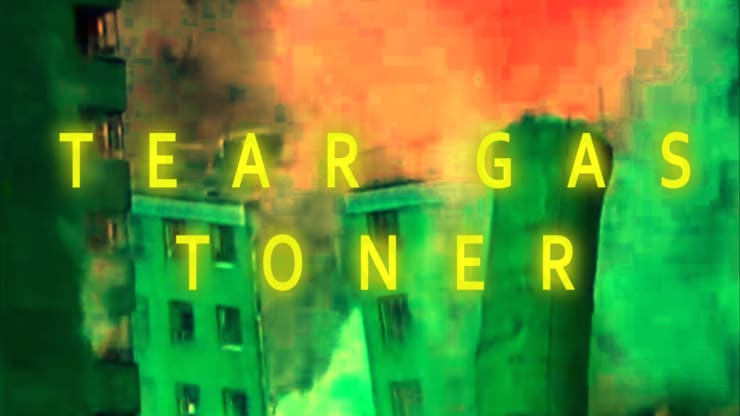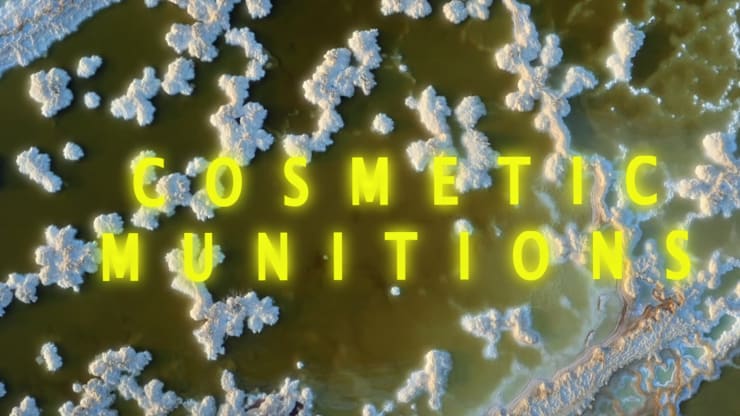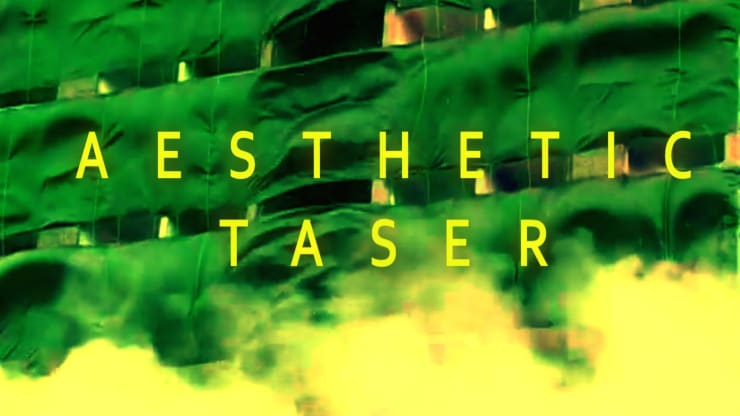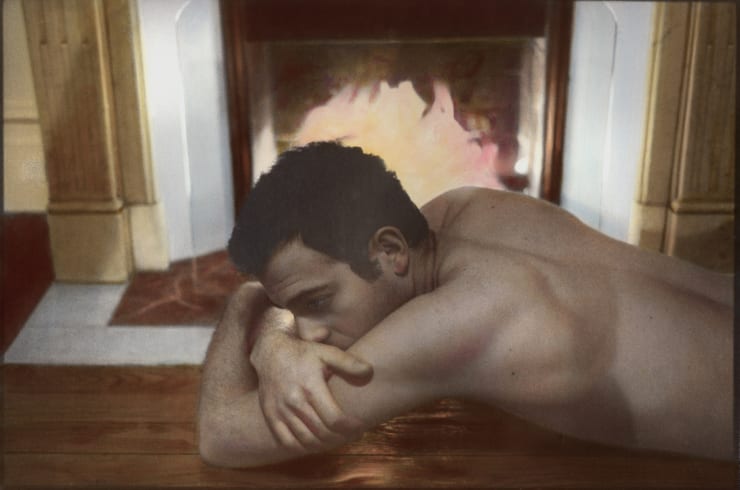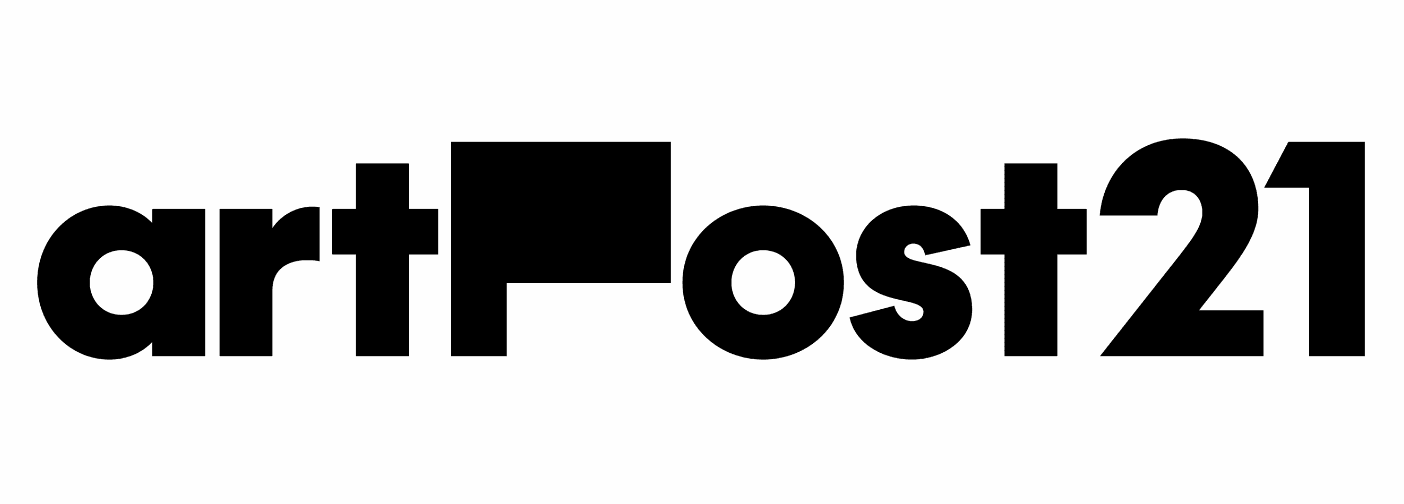-
Perpetual Inventory, Volume 1: An Exercise in Looking
Dr. Omar Kholeif -
In the Tired Stillness, what happens?
Omar Kholeif/Dr. O
Feels like we are in epic free-fall. Uncertain if the avatars before us are there, or but mere render ghosts. Recent years, days, months, weeks, seconds and minutes have heralded mutable forms of lived experience, for many, if not, for all beings. Amidst scenes of feverish nausea, and the slow skulking reach towards a ‘return’ to embodied presence, awakenings, or more aptly, a summoning has presented itself.
Weaving together the threads of this project at the year’s end has brought an imperative consideration to the forefront. That human resilience—the experiences that are conjured and developed through shared imagination, serve an affective purpose—enabling an emotional energy that can enliven humans from the unceasing melancholy of inexorable stillness.
Perpetual Inventory is an ongoing collaborative project that loosely takes as its point of reference, Rosalind Krauss’s perspective that a critic must constantly ‘take inventory’. Likewise, the disciplinary fields of visual art and its attendant culture—from museums and galleries through to archives and universities that are fuelled by operational teams who manage warehouses, climate conditions, shipping and conservation, are, or at least, should all take stock of their imprint. Working together, there is the possibility of evolving around the revolving, certainly, a means to imagine the kind of sediments that are often left behind.
Volume 1 of this project was developed during a period where I found myself spending much of my time in warehouses across the UAE—from the industrial zones of Sharjah and Dubai and back. It was in what ordinarily would be considered interstitial time that I returned to the discipline of arranging and re-arranging, paying attention to the beautiful possibilities that emerge through the accidents that occur from seeming chaos and disorder.
The publication that you hold in your hands is in and of itself an archive, an inventory of the long and short route toward this present. We begin with a map that unfurls a topographical sphere of a single-year—2022. Certain motifs and aesthetics, such as the never-ending, Covid-19 antigen test, remain visually prominent. From there on, the reader ventures forth into the vaults of The Third Line, one of Dubai’s first contemporary art galleries, having opened its doors in 2005. Here, I present a personal exercise in looking, a way to re-consider the relationships amongst works of art, ones which may have been sleeping, not dormant, awaiting an actof re-animation.
We end with two different living archives. The first is a collaboration with the UAE-based creative label, Krân—Dr. O’s Pop Shop. This serves as an homage and re-envisioning of art’s fluid and distributable possibilities, inspired by Keith Haring’s Pop Shop, which opened its doors in New York city in the 1980s. The pages end with fragments of lyric, poetry and song; a tribute to memory, and as the final words by Langston Hughes encourage, the right to dare.
-
Topography of a Year
-
Perpetual Inventory, Volume 1: An Exercise in Looking
Omar Kholeif/Dr. OMyriad a mythology ensnares the trifling sphere of art and its making. Some refer to these space(s) as analogous to planetary or interstellar organisms. Sociologist Howard S. Becker famously sought to sketch out ‘art worlds’ of cooperation, while the entrepreneurially spirited post-millennials *might* refer to the ‘high’ aesthetic microcosm as an ‘art industry’. Both denominations smack of awkward perversity. In the context of the Gulf States, and its attendant cultural ecologies, the aesthetic field of the visual arts is principally infinitesimal—so minute that the diminutive matryoshka doll feels like an apt starting point to fashion an avatar of/for its worlding.
Put the loathsome tabloid down, or better yet *try* to recycle it. From this Gulf to the globe, ‘art’ bears little comparison of scale with industries such as fashion and clothing, or the acquisition and connoisseurship of automobiles, interior furnishing, jewellery, or the colossi of tech, food, health, agriculture and construction.
A parallel allegory can be drawn to a topography afield, but this geography is not a ‘world’ in that it does not self-sustain its constituents, nor does it necessarily nourish but a mere few. Enter a milieu of obfuscation—conceal with concealer and enter the beauty industrial complex where a history of art is made accessible to a self-selecting circle of aesthetically designated power brokers. These individuals are sometimes dimpled and tanned. They can be found in fine tailoring, occasionally bookended by loafers and transplanted hair, competitively sourced and stitched-in from a Turkish peninsula.
The lips of elite human beings curl at the hushed whispers of intellect. Indeed, historical fact sullies the fabrications conjured from the egos of connoisseurs whose self-fulfilling prophecy is simply to be made manifest. Unclipped nose hairs protrude like pubes at the sight of these specimen—those designated as ‘curators’—the holier than thou paupers who masquerade in economic dwellings, seemingly placated by simple pleasures gleaned through their aesthetic senses.
The refined aesthete, it is assumed, possesses distinguishing insights that fashion national collections, broker communal tastes, presenting exhibitions for the commons. Their happiness is performed live, reaching its audience through hashtags, meticulously placed across social media platforms.
A grimace emerges from the gallery of curators waiting to descend from the galleys into a swollen shell of sweet bitter. No hired tuxedo or meal supplement can compensate them for the decades of being portrayed as purveyors of intangible privilege. Rubbing coins together simply to scrape into the historical canon, holding favour by enacting their hyper-specialised knowledge for festooned groups of people, always but barely for a form of minimum wage.
One curator shrieks, refusing to jump ship, ‘curate the power out of me’. The shackled coterie of neurotic intelligentsia begins to chant and plead in unison. White masks pull back, revealing green mould—hallowed CHEEK-bones. But for a spectral shimmer that transpires, unsettling the rickety dust-laden archives where aesthetic life is anthologised.
It is in the nook, the crevice of industrial zones and government buildings that the embodied process of storytelling re-emerged for this author—me, I, them. During what now felt like unceasing time—in the lockdowns of 2020, the moths became friends. The dutiful task of work presented itself in epic style through the disassembling of containers, boxes and crates. Undoing—not in a philosophical sense, but in functional essence began a new set of convenings. A form of authorship that could only take shape outside the bounds of a hyper-scheduled professional life.
Instead, the act of scanning, photographing, annotating, indexing, reporting and assessing, constellated a set of pleasures that were seemingly alien. To bring to sight that which was sleeping, to a form of wakefulness, became a contingent part of daily existence. Rosalind Krauss’s proclamation that a critic should continue to take ‘perpetual inventory’ emerged as a thought bubble. The ensuing time stirred this mortal coil into states of anxious awakening. For the curator, the museum director, the archivist, the storyteller, too, must renegotiate the epistemic structures that inform their institutions. The act of worldbuilding is thus articulated through accumulated, lived experience.
This is no ordinary post-modern affair, but a contemporary, ever-present state, where knowledge is developed through the interpolation of feeling—the affective possibilities developed as a result of constant doing. The labour-intensive function of the practicum, although the object of scorn in some seats of the academy, has forged possibilities for the spectator seeking to decode the experience of not merely expressing, but also, of enacting, knowledge. The clustering of years of repetitive skillsets— the very practice of artmaking, enables one with, to invoke the late Monir Shahroudy Farmanfarmaian, a hexagonal disposition. Refractive and reflective epistemes emerge from the thick of the body—qualifying perspectives beyond the inner/outer, in favour, of a multi-directional view—a meta-consciousness that is unbounded, uncontainable.
With exhibition sites temporarily closed, the virtual showroom, i.e., one’s stasis—their inventory was made visible to me in seeming infinitum—as pdf documents, or password protected URLs, as well as through 3D animated digital rendering. The seeds of a project were borne by a web application dangled in front of me by an insurance appraiser. As I watched her scroll through a database on her mobile device, a picture of a picture—of a hearse by the artist, Fouad Elkoury captured my attention. It was summoning me into a portal, a country of possible composition. It served as an invitation to employ the exploratory act of looking, tangentially. The invocation of André Malraux’s ‘imaginary museum’ aka the ‘museum without walls’, Benjamin and Berger, Didion, Sontag; the advent of the printing press, broadcast television, streaming and the potentialities of reproducible imagery, all lay as latent referents.
Lay as in laid to rest—a rousing act of reanimation awaited. In the brimming cells of a storage unit in Alserkal avenue, the foundations of the first chapter in this searching act was to begin, Perpetual Inventory, Volume 1: An Exercise in Looking. The exercise as it were, was to assemble an iconology of the last twenty years through culturally situated, extant art and artifact. Elkoury’s hearse ushered me to a mushrooming canvas ensconced in bubble wrap by Anuar Khalifi—a vortex eschewing Elkoury’s pyramid of death into a vessel for transcendence. I considered the concept of alterity in the days between, as I examined the pages of Octavia Butler, Audre Lorde, Kodwo Eshun, and Greg Tate. Was this an exercise in queering a gaze that was already askew?
A shelled building, a ruin, meets the sky, in piercing light. Again, Fouad Elkoury’s photographs beckoned. Through the threshold, a memento mori awaited. Nostalgia was not a dirty word here. A hand-painted self-portrait of the artist Youssef Nabil by a fireplace, an uncharacteristic scene by the late Shirin Aliabadi, a transgenerational diptych in black and white by Arwa Abouon, a set of instructions by Hayv Kahraman, pave a path in and out of order, rupturing the politeness of a single aesthetic gesture. A series of trophies await us by Joana Hadjithomas and Khalil Joreige, an album of memory languages crafted and grafted by Hassan Hajjaj sits atop a staircase. From above and below, landscapes—stitched and woven, by Jordan Nasser and Tarek Al-Ghoussein, among many others, herald one through a corridor of one’s own imagining. Exit stage left and you will find yourself in consumer heaven, with art and artists. A souvenir, your keepsake, is our remembrance.
For Frank Gallacher, always.
-
-
Worklist
-
 Ala EbtekarJourney to the Seventh Planet, 2015Archival Inkjet print on found poster104.00 x 68.00 cm.
Ala EbtekarJourney to the Seventh Planet, 2015Archival Inkjet print on found poster104.00 x 68.00 cm. -
 Amir H. FallahVenice Beach, a Fury of Stones, 2007Mixed media on canvas152 x 122 cm
Amir H. FallahVenice Beach, a Fury of Stones, 2007Mixed media on canvas152 x 122 cm -
 Anuar KhalifiMaqam "Negus", 2021Acrylic on canvas195 x 167 cm
Anuar KhalifiMaqam "Negus", 2021Acrylic on canvas195 x 167 cm -
 Arwa AbouonUntitled, Generation Series, Father Son, 2006Digital print on photographic paper183 x 82 cm eachEdition 7 of 10, 3AP
Arwa AbouonUntitled, Generation Series, Father Son, 2006Digital print on photographic paper183 x 82 cm eachEdition 7 of 10, 3AP -
 Farah Al QasimiBaba in Picture Album, 2017Archival Inkjet Print58.40 x 84.60 cm.Edition 4 of 5, 2AP
Farah Al QasimiBaba in Picture Album, 2017Archival Inkjet Print58.40 x 84.60 cm.Edition 4 of 5, 2AP -
 Farhad MoshiriThree Pillows, 2006Acrylic on canvas190.00 x 150.00 cm.
Farhad MoshiriThree Pillows, 2006Acrylic on canvas190.00 x 150.00 cm. -
 Fouad ElkouryEntree Edfou, 1990Ink-jet print mounted on aluminium21.70 x 14.50 cmEdition 1 of 5
Fouad ElkouryEntree Edfou, 1990Ink-jet print mounted on aluminium21.70 x 14.50 cmEdition 1 of 5 -
 Fouad ElkouryNada Entree Immeuble, 1990Inkjet Print on Baryta Paper72.00 x 90.00 cmEdition 2 of 5
Fouad ElkouryNada Entree Immeuble, 1990Inkjet Print on Baryta Paper72.00 x 90.00 cmEdition 2 of 5 -
 Fouad ElkouryPyramide Nada Nuit, 1987Inkjet Print Mounted on Aluminium12.40 x 18.50 cmEdition 1 of 5
Fouad ElkouryPyramide Nada Nuit, 1987Inkjet Print Mounted on Aluminium12.40 x 18.50 cmEdition 1 of 5 -
 Fouad ElkouryThe Bullet rigged curtain, Beirut, 1995Ink-jet print on Baryta paper72.00 x 90.00 cmAP 1 of 2
Fouad ElkouryThe Bullet rigged curtain, Beirut, 1995Ink-jet print on Baryta paper72.00 x 90.00 cmAP 1 of 2 -
 Fouad ElkouryOpera House, Beirut, 1994Inkjet print on Baryta paper125 x 100 cm
Fouad ElkouryOpera House, Beirut, 1994Inkjet print on Baryta paper125 x 100 cm -
 Hassan HajjajDehbi In Pink, 2000Hand painted photographic print with tyre frame66.00 x 56.00 cmEdition 1 of 10
Hassan HajjajDehbi In Pink, 2000Hand painted photographic print with tyre frame66.00 x 56.00 cmEdition 1 of 10 -
 Hassan HajjajCall Me, 2000C-Print, Walnut wood frame, and found objects87.00 x 62.00 x 3.50 cm.Edition 3 of 10
Hassan HajjajCall Me, 2000C-Print, Walnut wood frame, and found objects87.00 x 62.00 x 3.50 cm.Edition 3 of 10 -
 Hayv KahramanPain Scale, 2017Oil on wood188.00 x 122.00 cm.
Hayv KahramanPain Scale, 2017Oil on wood188.00 x 122.00 cm. -
 Hayv KahramanUntitled Drawing 2, 2021Watercolour and Dried Pigment on Paper18.00 x 26.00 cm
Hayv KahramanUntitled Drawing 2, 2021Watercolour and Dried Pigment on Paper18.00 x 26.00 cm -
 Hayv KahramanSmart Card 2, 2016Sumi Ink on Paper
Hayv KahramanSmart Card 2, 2016Sumi Ink on Paper -
 Joana Hadjithomas & Khalil JoreigeWar Trophies N°1, 2006-2007Photographic prints on baryté paper30.00 x 38.00 cmEdition 3 of 5, 2AP
Joana Hadjithomas & Khalil JoreigeWar Trophies N°1, 2006-2007Photographic prints on baryté paper30.00 x 38.00 cmEdition 3 of 5, 2AP -
 Joana Hadjithomas & Khalil JoreigeWar Trophies N°2, 2006-2007Photographic prints on baryté paper30.00 x 38.00 cmEdition 3 of 5, 2AP
Joana Hadjithomas & Khalil JoreigeWar Trophies N°2, 2006-2007Photographic prints on baryté paper30.00 x 38.00 cmEdition 3 of 5, 2AP -
 Joana Hadjithomas & Khalil JoreigeWar Trophies N°3, 2006 - 2007Photographic prints on baryté paper30.00 x 38.00 cmEdition 4 of 5, 2AP (Edition 4 and Edition 5 are only available as a complete set of 9)
Joana Hadjithomas & Khalil JoreigeWar Trophies N°3, 2006 - 2007Photographic prints on baryté paper30.00 x 38.00 cmEdition 4 of 5, 2AP (Edition 4 and Edition 5 are only available as a complete set of 9) -
 Joana Hadjithomas & Khalil JoreigeWar Trophies N°4, 2006-2007Photographic prints on baryté paper30.00 x 38.00 cmEdition 4 of 5, 2AP (Edition 4 and Edition 5 are only available as a complete set of 9)
Joana Hadjithomas & Khalil JoreigeWar Trophies N°4, 2006-2007Photographic prints on baryté paper30.00 x 38.00 cmEdition 4 of 5, 2AP (Edition 4 and Edition 5 are only available as a complete set of 9) -
 Joana Hadjithomas & Khalil JoreigeWar Trophies N°5, 2006 - 2007Photographic prints on baryté paper30.00 x 38.00 cmEdition 3 of 5, 2AP
Joana Hadjithomas & Khalil JoreigeWar Trophies N°5, 2006 - 2007Photographic prints on baryté paper30.00 x 38.00 cmEdition 3 of 5, 2AP -
 Joana Hadjithomas & Khalil JoreigeWar Trophies N°6, 2006 - 2007Photographic prints on baryté paper30.00 x 38.00 cmEdition 4 of 5, 2AP (Edition 4 and Edition 5 are only available as a complete set of 9)
Joana Hadjithomas & Khalil JoreigeWar Trophies N°6, 2006 - 2007Photographic prints on baryté paper30.00 x 38.00 cmEdition 4 of 5, 2AP (Edition 4 and Edition 5 are only available as a complete set of 9) -
 Joana Hadjithomas & Khalil JoreigeWar Trophies N°7, 2006 - 2007Photographic prints on baryté paper30.00 x 38.00 cmEdition 2 of 5, 2AP
Joana Hadjithomas & Khalil JoreigeWar Trophies N°7, 2006 - 2007Photographic prints on baryté paper30.00 x 38.00 cmEdition 2 of 5, 2AP -
 Joana Hadjithomas & Khalil JoreigeWar Trophies N°8, 2006 - 2007Photographic prints on baryté paper30.00 x 38.00 cmEdition 2 of 5, 2AP
Joana Hadjithomas & Khalil JoreigeWar Trophies N°8, 2006 - 2007Photographic prints on baryté paper30.00 x 38.00 cmEdition 2 of 5, 2AP -
 Joana Hadjithomas & Khalil JoreigeWar Trophies N°9, 2006 - 2007Photographic prints on baryté paper30.00 x 38.00 cmEdition 2 of 5, 2AP
Joana Hadjithomas & Khalil JoreigeWar Trophies N°9, 2006 - 2007Photographic prints on baryté paper30.00 x 38.00 cmEdition 2 of 5, 2AP -
 Jordan NassarFeu du désert, 2022Hand-embroidered cotton on cotton88.90 x 107.95 x 2.54 cm
Jordan NassarFeu du désert, 2022Hand-embroidered cotton on cotton88.90 x 107.95 x 2.54 cm -
 Laleh KhorramianLandscape Scroll 6, 2016Monotype and mixed media on polypropylene132.00 x 51.00 cm
Laleh KhorramianLandscape Scroll 6, 2016Monotype and mixed media on polypropylene132.00 x 51.00 cm -
 Laleh KhorramianGuardian Yellow, 2016Ink, Oli, Mylar, Collage on Polypropylene183.00 x 76.00 cm
Laleh KhorramianGuardian Yellow, 2016Ink, Oli, Mylar, Collage on Polypropylene183.00 x 76.00 cm -
 Monir Shahroudy FarmanfarmaianUntitled (Diamond 3), 2016Mirror reverse Glass Painting on Plexiglass41 cm. diameter
Monir Shahroudy FarmanfarmaianUntitled (Diamond 3), 2016Mirror reverse Glass Painting on Plexiglass41 cm. diameter -
 Monir Shahroudy FarmanfarmaianUntitled (Diamond 4), 2016Mirror and reverse glass painting on plexiglass41 cm. diameter
Monir Shahroudy FarmanfarmaianUntitled (Diamond 4), 2016Mirror and reverse glass painting on plexiglass41 cm. diameter -
 Monir Shahroudy FarmanfarmaianFree Drawing 24, 2016Felt tip marker and glitter on paper56.00 x 76.00 cm
Monir Shahroudy FarmanfarmaianFree Drawing 24, 2016Felt tip marker and glitter on paper56.00 x 76.00 cm -
 Monir Shahroudy FarmanfarmaianFree Drawing 25, 2016Felt tip marker and glitter on paper70.00 x 100.00 cm
Monir Shahroudy FarmanfarmaianFree Drawing 25, 2016Felt tip marker and glitter on paper70.00 x 100.00 cm -
 Monir Shahroudy FarmanfarmaianKinetic Violet, 2018Reverse Plexiglass Painting and Mirror and Steel on Wood115.00 x 35.00 x 35.00 cm
Monir Shahroudy FarmanfarmaianKinetic Violet, 2018Reverse Plexiglass Painting and Mirror and Steel on Wood115.00 x 35.00 x 35.00 cm -
 Pouran JinchiFlag 1, 2022Acrylic and Ink on Canvas27.90 x 35.56 cm
Pouran JinchiFlag 1, 2022Acrylic and Ink on Canvas27.90 x 35.56 cm -
 Shirin AliabadiGirls in Car 4, 2005Color Photographic Print55.50 x 83.00 cmEdition 1 of 3, 1AP
Shirin AliabadiGirls in Car 4, 2005Color Photographic Print55.50 x 83.00 cmEdition 1 of 3, 1AP -
 Sophia Al MariaNerve Concealer, 2017Digital Print24.00 x 42.00 cm
Sophia Al MariaNerve Concealer, 2017Digital Print24.00 x 42.00 cm -
 Sophia Al MariaTear Gas Toner, 2017Digital Print24.00 x 42.00 cm
Sophia Al MariaTear Gas Toner, 2017Digital Print24.00 x 42.00 cm -
 Sophia Al MariaCosmetic Munitions, 2017Digital Print24.00 x 42.00 cm
Sophia Al MariaCosmetic Munitions, 2017Digital Print24.00 x 42.00 cm -
 Sophia Al MariaAesthetic Taser, 2017Digital Print24.00 x 42.00 cm
Sophia Al MariaAesthetic Taser, 2017Digital Print24.00 x 42.00 cm -
 Sophia Al MariaScrub, 2017Digital Print24.00 x 42.00 cm
Sophia Al MariaScrub, 2017Digital Print24.00 x 42.00 cm -
 Sophia Al MariaIncendiary, 2017Digital Print24.00 x 42.00 cm
Sophia Al MariaIncendiary, 2017Digital Print24.00 x 42.00 cm -
 Sophia Al MariaPigment Ordnance, 2017Digital Print24.00 x 42.00 cm
Sophia Al MariaPigment Ordnance, 2017Digital Print24.00 x 42.00 cm -
 Tarek Al-GhousseinAbu Dhabi Archipelago (Jubabibat), 2015 -Digital Print100 x 130 cmEdition 1 of 3, 1AP
Tarek Al-GhousseinAbu Dhabi Archipelago (Jubabibat), 2015 -Digital Print100 x 130 cmEdition 1 of 3, 1AP -
 Tarek Al-GhousseinAbu Dhabi Archipelago (Hami Rohah Gassar), 2015-Digital Print100 x 130 cmEdition 2 of 3, 1AP
Tarek Al-GhousseinAbu Dhabi Archipelago (Hami Rohah Gassar), 2015-Digital Print100 x 130 cmEdition 2 of 3, 1AP -
 Tarek Al-GhousseinAl Sawaber 6181, 2015-2017Digital Print21.00 x 28.00 cmEdition 1 of 6
Tarek Al-GhousseinAl Sawaber 6181, 2015-2017Digital Print21.00 x 28.00 cmEdition 1 of 6 -
 Tarek Al-GhousseinAl Sawaber 5003, 2015-2017Digital Print21.00 x 28.00 cmEdition 1 of 6
Tarek Al-GhousseinAl Sawaber 5003, 2015-2017Digital Print21.00 x 28.00 cmEdition 1 of 6 -
 Tarek Al-GhousseinAl Sawaber 5655, 2015-2017Digital Print21.00 x 28.00 cmEdition 1 of 6
Tarek Al-GhousseinAl Sawaber 5655, 2015-2017Digital Print21.00 x 28.00 cmEdition 1 of 6 -
 Tarek Al-GhousseinAl Sawaber 6299, 2015-2017Digital Print21.00 x 28.00 cmEdition 1 of 6
Tarek Al-GhousseinAl Sawaber 6299, 2015-2017Digital Print21.00 x 28.00 cmEdition 1 of 6 -
 Youssef NabilSelf-portrait Next to the Fire, Paris, 2004Hand coloured gelatin silver print26.00 x 39.00 cmEdition 3 of 10
Youssef NabilSelf-portrait Next to the Fire, Paris, 2004Hand coloured gelatin silver print26.00 x 39.00 cmEdition 3 of 10
-
-

-
They used to SAY
One Day they’d make a movie of you!
They used to Say:
One Day they’d make a movie about you.
I used to believe that one they
were gonna make a movie about me.
-
!
feel like
I have been blown to
smithereens
(after HP Sauce)
-
Zanzibar, again.
(after Lubaina Himid)
Painting—a commemoration
An exercise in speed, daring, calm and panic
They wonder: Will the next journey be easier?
Women’s tears fill oceans
Shutters only hide the sun
The Rich Women of Zurich are summoning
Rainbow clearance
They say that humour makes art accessible
But I see jesting as a kind of metal handkerchief
Bitter-sweet cries that sweeten the bitter
Tongues that blossom
Letter artifacts
Stained, not charred
-
Aftersun
(For Magda)
As human offspring
we succumb to kinds of knowing
That we will, shall, will, never be able to enter their minds
the inner lives
of fathers, or mothers
Belonging clinks, the longing
A Rosewater Sprinkle
A night of force-fed lovemaking
Thorns smudge my head—
A Philharmonic Orchestra
Processes
minutes and minutes of listening, and just
Rainfall sutures the pain
How does one dissemble a palimpsest?
where does it begin and end?
Is this my luggage to carry?
My luggage to bear burden?
Shall, will, there be a moment when I am no longer carrying someone else’s baggage?
A sub_strata//
dreams of possible present
No future, they say
The Revenge for a lifetime without a mother
In the prison of a father
A Quicktime file, loops.
-
On Solid Ground
Each came with a pre-figured line out of a movie
A Magic Trick unspooled from a pocket
Right before
Bust & Run
‘I feel like we’re just stealing time’
Was this haram act of back and forth—
Going to dissipate
Just Because the laws of the land did not sanction this?
The first ‘One’
Used pithy phrasing
Pulled from the book of trite
He ate too many Corn Dogs—
‘One Day, you’ll leave me for the world!’
A phrase to be howled
Thump, Crackle and Bang
Me and my wheelie bag sleep on in-land pavements
This is a Bomb—the Luring Love Test
The words stick to me, superglued
Outstretched on two-hundred-year-old wood floor,
Termite dust floating like embers
Windows shuttered
Doors bolted and bolted,
The Rites of Solitary
Alive with the Ghouls
Total Recall
ENTER the Nostalgia Police
You should have never said ‘NO’.
-
Poetry of Contagion (2021)
The future is hearsay, or is it Heresy
A new variant
An active protein that manifests from in-between the seams?
Searching for an exit sign
The wounds are as bulbous
As the Cloud
The Infinity Engine
Rebooting in the African desert
AWS`
A locomotive soaked in honey
A pile of Muck
A Bronchial murmur
Native-immigrants, forever
Hollowed of Knowing
Updating weaker
“Update Slacker”
Nomadlands
Everyone’s land
No one’s land
The Father, the Dissident, The Jester, The Creep
US: You and Me and Everyone We Know
Bird after Bird
Travel down identified routes
Extinct on arrival O’clock
There are no more O’clocks
Scat
Till you are nothing but a dreg
Voided
A couple of cents left on a balance sheet
Baby poems
Surrogate children
Filling in for wounds that cannot be sutured
A cosmo-sphere in waiting
Ascending, transcendence
Wanton Science, without fiction
-
The contours are different
this time
The sleepy ape-shaped animal has woken from their long stupor
Emerging from the rattling cage
From the dormant waters
Only one aim in sight
Universal take-over
-
There’s a Mood
In the air
Melancholy’s sister
A beautiful weight
With eyes as piercing as the sun’s
Never let it go
Never let it go
Never let me go
-
DARE
Langston Hughes
Let Darkness
Gather up its roses
Cupping softness in the hand
Till the hard fist
Of sunshine
Dares the dark
To stand
-

-
About Dr Omar Kholeif
Dr Omar Kholeif CF FRSA aka Dr. O is an author of prose and poetry, a historian of the academy and its peripheries and a curator of vanquished and suppressed archives. They have worked as a broadcaster, filmmaker, editor, publisher, and museum director. Over the last two decades, their work has concentrated on the evolving nature of networked image culture in relation to intersectional questions emerging in the field and study of ethnicity, race, and gender. Their lines of inquiry have come to life in over 60 exhibitions, and in nearly 40 authored, co-authored, and/or edited books, which have been translated into 12 languages. Dr. Kholeif was co-curator of Sharjah Biennial 14: Leaving the Echo Chamber and currently serves as Director of Collections and Senior Curator, Sharjah Art Foundation, UAE. Their much-anticipated monograph, Internet_Art: From the Birth of the Web to the Rise of NFTs is published by Phaidon in early 2023, www.phaidon.com/internetart.
Visit: www.omarkholeif.com.
-






